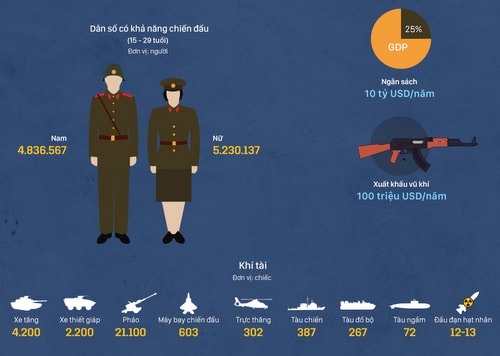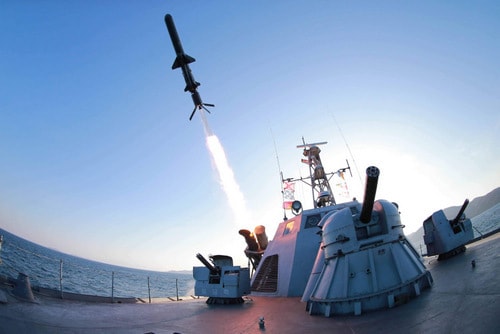North Korea's countermeasure strategy when attacked by the US
Maintaining a large army, developing weapons of mass destruction, and using guerrilla warfare are measures North Korea can use to respond to a US attack.
North Korea calls missile launch "perfect weapon"
Concerned about North Korea's ballistic missile and nuclear weapons programs, the US has continuously gathered strategic weapons in the East Asia region, while threatening to launch a preemptive strike to solve the problem. However, in the event of war, Pyongyang can carry out a series of countermeasures that will cause damage to the enemy, according to National Interest.
Military expert Kyle Mizokami believes that North Korea has many ways to respond to a US attack, most notably a standing army.numerousworld leader withabout 1,190,000 people, togetherelite special forces of up to 200,000 men.
The North Korean People's Army (KPA) applies a military doctrine specializing in offensive attacks, so in the event of a conflict with the US-South Korean coalition, North Korean divisions will likely launch a lightning attack, capturing the South Korean capital Seoul in the shortest time.
Pyongyang can also deter its adversaries from military action by threatening to use weapons of mass destruction. Its nuclear weapons are hidden, and it is impossible to determine where they are stored, how they are deployed, and where they are deployed. In addition, there are large chemical and biological weapons stockpiles scattered across the country.
At sea, North Korea's submarine force can cause significant damage to the US and South Korean navies thanks to its copy of Russia's modern 3M24E "Uran" anti-ship missile.
 |
North Korea's military power. Click on the image to see the full image. |
However, outdated equipment and logistical problems make it impossible for the North Korean army to sustain a prolonged war against the US-South Korean coalition, which has superior technology. The threat to fire half a million artillery shells at Seoul is likely to achieve only initial success, after which the artillery units will quickly run out of ammunition or be hunted down and destroyed by the enemy, forcing North Korea to retreat to a defensive position.
North Korea’s first line of defense is its intelligence, surveillance, and reconnaissance assets. It has more than 40 coastal radar stations in the east and west, along with coastal artillery of 76mm or more. Pyongyang also has 50 radar stations across the country to monitor its airspace.
However, most of these devices are more than 30 years old, likely inoperable and vulnerable to electronic jamming. Even if they do work, their very short detection range makes it nearly impossible for North Korea to detect US and South Korean air and naval forces massed in the area.
In such a situation, North Korea would likely have to cede all the skies to US stealth fighters and South Korean fighters. Its fleet of warships would also quickly run out of fuel or be destroyed in clashes at sea.
 |
A copy of the 3M24E missile made by North Korea. Photo: Business Insider. |
The most dangerous possibility is that North Korea launches an asymmetrical war against the US-ROK coalition on the ground. The North Korean leadership could arm the entire population and wage guerrilla warfare until the enemy is deadlocked on the battlefield and has to propose negotiations.
International analysts say that military action has never been a viable solution to the North Korean crisis, as it could lead to dangerous consequences for the region and the world.
According to VNE
| RELATED NEWS |
|---|

